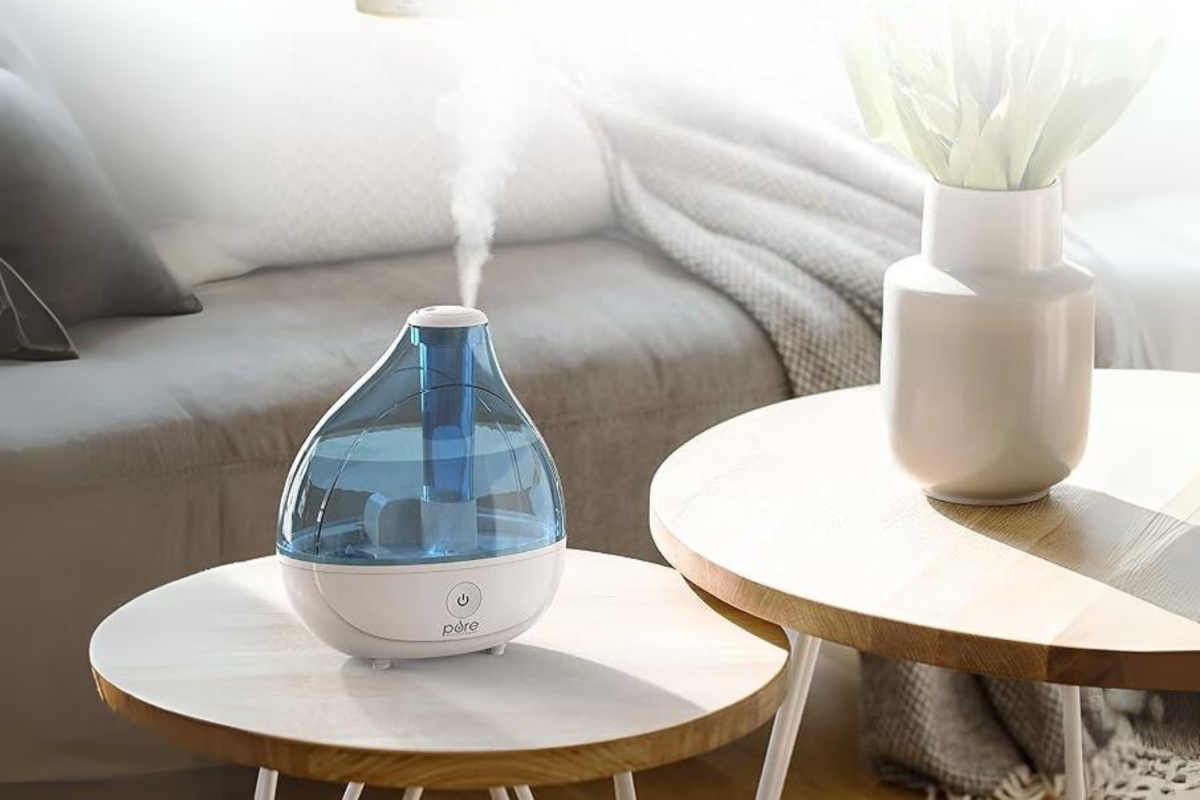Confession time! I don’t floss daily, even though I tell my dentist otherwise, but I do carry floss picks for those emergency food-stuck-in-teeth moments. These instances inevitably remind me of my inconsistent flossing habits.
I’ve long wondered whether a good water flosser would help me be more diligent. Now, after much research and testing of various water flossers, my answer is yes. So, what is a water flosser and how does it work? A water flosser is a handheld device that streams water at a steady pace to remove food particles from between your teeth, just like traditional dental floss.
According to the American Dental Association, optimal oral hygiene involves brushing for two minutes twice daily to prevent plaque buildup and cleaning between teeth once daily to prevent gum diseases such as gingivitis. Despite this, fewer than 50% of people floss daily.
Why? A 2022 study lists various reasons, such as fear of bleeding gums or pain, forgetfulness, and skepticism about the effectiveness of flossing in addition to brushing to prevent gingivitis, even when doctors recommend it.
However, the fear of bleeding or damaged gums is no longer a valid excuse. According to the ADA, water flossing is an excellent alternative for those with dental work that makes traditional flossing challenging. This includes people with crowns, bridges, braces or implants.
And it’s never too early to start flossing. “Children should begin flossing when they have two teeth that touch, typically around the age of 2 or 3,” says Casey Johnson, DDS, a board-certified orthodontist who practices in Colorado. “It’s generally recommended to start with regular dental floss to ensure that proper technique and habits are established.” But if kids find floss hard to use, a water flosser can be an effective alternative, says Johnson, if used under adult supervision.
He recommends the Waterpik brand because “it is easy to use, durable and has everything you would need for a water flosser.” Other brands may have more bells and whistles, “but Waterpik is a simple solution that does the job well at a relatively low cost for the consumer,” Johnson says.
As it happens, after testing multiple products and speaking with a number of dentists about what to look for in a high-quality water flosser, I tend to agree: Waterpik wins out as the top pick for best water flosser. That said, there are four other flossers that stand out for a number of reasons, whether you’re on a budget, you’re looking for a long-lasting battery or you want a flosser you can take with you when you travel. So read on to discover which water flossers made the cut (and which ones didn’t).
Table of contents
Best overall water flosser
Cost: $86 | Tank capacity: 22 ounces | Power source: 120VAC/60Hz for use in North America only | Battery life: N/A | Number of pressure settings: 10
Our best overall pick, the Aquarius Water Flosser, is compact enough for small spaces, yet with its seven different floss tips and 360-degree tip rotation, it’s versatile enough to meet all your family’s flossing needs.
In addition to three color-coded classic jet tips (making it possible for different people to use the tool without sharing a tip), this model includes a toothbrush tip, a plaque seeker tip, an orthodontic tip and a pik pocket tip for anyone who has periodontal pockets. This makes it the best toothbrush/water flosser combo, one that’s also ideal for anyone with braces or sensitive teeth and gums.
The water flosser’s one big drawback? It’s noisy. So don’t expect your significant other or baby to sleep through your flossing routine.
- Lots of tips and pressure settings for a personalized clean
- Easy to use
- Does an effective job
More water flossers we like
Cost: $30 | Tank capacity: 30 seconds of water | Power source: Battery | Battery life: The life of 2 AA batteries | Number of pressure settings: 3
Like many other Amazon Basics products, the brand’s water flosser is just that — basic. Its features include an easy tip release, two types of pressure cleaning tips and a flexible, rotating tip that allows you to get into small spaces.
Our testers liked the product’s ease of use and the fact that it didn’t leave them with a water mess to clean up on the sink. They were less pleased with the tank’s capacity and the need to use the flosser twice for a thorough-feeling clean.
- Price
- Ease of use
- Strong pressure
- Need to use the flosser twice to feel thoroughly clean
- Placement of the on-off button
Cost: $75 | Tank capacity: N/A | Power source: Rechargeable lithium-ion battery; multivoltage charger, wall adapter and USB charging cable included | Battery life: 14 days | Number of pressure settings: Clean and deep clean flossing modes and 3 pressure settings
The Philips Cordless Power Flosser is your new best friend if you thrive on convenience and efficiency. Forget about tangled cords and limited reach; this gadget allows you to floss anywhere, anytime.
Available in black, white and mint colors, our top cordless pick has an ergonomic handle design that makes it easy to hold, and its compact size is suitable for small sink areas. Testers noted that the water tank often needed multiple refills per session, but Philips provides a countertop version if you prefer a larger reservoir.
The cross-shaped tip creates four wide water streams, allowing you to effortlessly cover more area, while the brand’s “pulse wave” technology guides you from tooth to tooth, ensuring you don’t miss a spot. The tool is also “whisper quiet” (which we can attest to), ensuring you can floss quietly without disturbing others.
Our testers consistently mentioned performance, ease of use, convenience and simplicity as the reasons they liked the product and were likely to continue using it.
- Simplicity and ease of use
- High-quality performance
- Very low noise level
- Small tank capacity
- Needs a separate charger, making it less travel-friendly
Cost: $34 | Tank capacity: 260 ml | Power source: Battery | Battery life: Up to 40 days | Number of pressure settings: 5
The Bitvae Cordless C5 water flosser is the top choice for travelers prioritizing dental health. Its compact, sleek and stylish design is travel-friendly and the tank capacity provides an effective, 60-second clean.
Bitvae adopts a “user-centric approach” to product development, and its water flosser certainly delivers. Our favorite feature is the exceptional 40-day battery life in low-intensity mode. It’ll ensure you stay powered up throughout your travels without needing to carry a bulky charger.
This flosser has three modes and a variety of nozzles, including a tongue cleaner, so it can adapt to all your oral hygiene needs. It also has a wide-mouth reservoir that makes it easy to clean.
In addition to our own positive, in-house review, the travel-friendly nature of the device gets top marks from other online reviewers. One happy Amazon customer notes, “It comes with several tips so multiple people in your house can use it. It’s portable, so you can throw it in a suitcase when traveling. I am very happy with this product.”
- Built-in clean, massage and jet modes
- Compact, ergonomic design
- Small and lightweight but powerful
- Water pressure too intense for some
- Some reports of poor battery life
Cost: $80 | Tank capacity: 90+ seconds of flossing time | Power source: Rechargeable lithium-ion battery | Battery life: Up to 4 weeks per charge | Number of pressure settings: 10
Picture this: You’re in the middle of your meticulous dental routine, confidently blasting away plaque with your trusty water flosser, when suddenly it sputters to a stop. No battery. Nada.
That’s why long battery life is crucial, allowing you to floss to your heart’s content without the inconvenience of midroutine power failures. And that’s where our top pick for battery life delivers. The Ion stands out from other handheld cordless water flossers for its exceptional battery life. One five-star Amazon reviewer notes, “The battery charges quickly and lasts for a long time, ensuring multiple uses before needing to be recharged.”
With 10 pressure settings, seven flossing tips and a 360-degree rotating tip handle, this flosser effortlessly reaches your back teeth and is ideal for people with dental implants and orthodontics. The one-minute timer with a 30-second pacer ensures thorough flossing, while the reservoir provides over 90 seconds of continuous use — no refills needed!
At 30 percent smaller than most other traditional countertop flossers, this compact Waterpik is perfect for small spaces and is also our choice as “best for small spaces” and “best for people with implants and orthodontics.”
- Multiple flossing tips and pressure settings
- 90+ seconds of flossing time
- Space-saving
- Some people may find it noisy
Traditional dental floss vs. water flossers
Experts agree that a water flosser should supplement rather than replace traditional flossing in most cases. “While water flossers are effective, regular floss remains the gold standard for flossing because it can reach slightly under the gums, providing better removal of food particles and plaque,” says Chelsea Perry, DMD, a dentist practicing in Westborough, Mass.
Factors to consider when purchasing a water flosser
When choosing the best water flosser, it’s essential to think about your health and lifestyle needs. Here’s what to consider:
Gum sensitivity: Look for models with adjustable pressure settings and gentle pulse modes.
Orthodontics, implants and crowns: Choose a flosser with specialized nozzles for braces and other dental appliances. Ensure the flosser has tips designed to effectively clean around implants and crowns.
Lifestyle: Do you travel frequently? If so, opt for a cordless, rechargeable model that’s compact and easy to pack.
Space availability: Select a design that fits comfortably in your bathroom, especially if space is limited.
Affordability: Find a model that fits your budget without compromising essential features.
What to look for in a water flosser
Here are the factors to look for when shopping for a water flosser:
Type: Countertop or cordless? A countertop model offers more power but requires space and an outlet, while a cordless model is portable, rechargeable and travel-friendly.
Water pressure settings: Perry points out that adjustable pressure settings can accommodate different sensitivity levels.
Water capacity: To avoid frequent refills as you floss, consider the flosser’s water capacity — a larger reservoir means you may be able to get through a full session without having to stop to add more water. Just be aware that Perry advises against leaving water in the reservoir between uses.
Nozzles: Check for a variety of nozzles to address different dental needs.
Pulsation frequency: Ensure the flosser offers effective pulsation for thorough cleaning.
Features: Do you need normal, soft or massage pulse modes to enhance your flossing routine? What about a pause button to control water flow or a water pressure indicator for precise control? Perry adds that a rotating nozzle helps reach all areas of your mouth.
Design and ergonomics: Evaluate how the flosser fits into your space and how comfortable it is to hold and use. Perry adds that she avoids flossers with overly complex controls and those that are difficult to clean.
Price: More expensive doesn’t always mean better. Quality options are available for every budget.
Warranty: Check for a warranty to ensure your investment is protected.
As dental hygienist JoAnn Gurenlian, RDH, PhD, a Proclaim Health adviser, points out, “The best option when it comes to toothbrushes, flossing and beyond is always the one that the patient will use regularly.”
So, spend some time doing your homework and choosing the best option for you.
How we chose the best water flosser
We did our research, contacted multiple dentists and dental health experts, including the American Dental Association, and spoke to almost a dozen longtime water flosser users to select the eight products we tested.
All testers completed a standardized rating form for each product they tested, and based on their ratings and notes, the final product selections were determined.
FAQs
Are water flossers as effective as traditional floss?
Yes and no, according to the research and the experts. Even proponents of water flossers concede that traditional flossing produces the best results if done frequently. But that’s the key: frequency. “Water flossers require less effort and therefore are used more frequently than traditional floss,” says Johnson.
Can I use a water flosser if I have braces or implants?
Yes. Some water flossers tout their effectiveness for people with implants or orthodontics, and many of the dentists we spoke to said they recommend them for patients in those categories.
“We have patients tell us they will use normal floss,” says Johnson, “but after a few appointments, it’s clear that they haven’t flossed at all. We have found that patients who use water flossers use them much more frequently and often have healthier gums.”
How often should I use a water flosser?
At least once a day for 60 seconds. The best time to floss is at night before bed. Perry’s nighttime routine is to brush for two minutes, floss with traditional floss and then use a water flosser.
Who shouldn’t use a water flosser?
“People with periodontal disease should not use a water flosser because the force of the water jet can potentially push bacteria deeper into the gum pockets, exacerbating the condition,” says Perry.
What’s the difference between a water flosser and an electric toothbrush?
An electric toothbrush can help you get to hard-to-reach tooth surface areas. A water flosser can get between teeth and below the gumline, but it doesn’t clean the tooth surface.
Is a countertop or cordless water flosser better for me?
It depends on your preferences and needs. Countertop models generally provide more flossing tips for family use but take up more space and need a power outlet. Cordless water flossers are rechargeable, portable and convenient. They often come with various flossing tips designed for different purposes, although they may be less suitable for multiple users sharing the same device.
Other products we tested
Oclean: This water flosser must be the most streamlined, elegantly designed flosser I’ve ever seen. I wanted to love it. Unfortunately, even on the lowest-intensity setting, the tips suctioned my inner cheeks and underneath my tongue and vibrated too forcefully for me.
Philips Sonicare Power Flosser 3000: I loved this compact countertop version of the Philips Sonicare Cordless Power Flosser, but since it offers the same features as its cordless counterpart, we chose to include the cordless version instead.
Waterpik Cordless Water Flosser: It’s a basic version of the newer and more feature-rich Waterpik models on our list, so we chose not to include this water flosser. However, it’s a solid option for those who want a simple, cost-effective flosser.
Meet our experts
JoAnn Gurenlian, RDH, MS, PhD, AAFAAOM, FADHA, dental adviser at Proclaim Health
Casey Johnson, DDS, board-certified orthodontist at All Kids Dental in Colorado
Chelsea Perry, DMD, founder of Elite Dental Studio in Westborough, Mass.



















